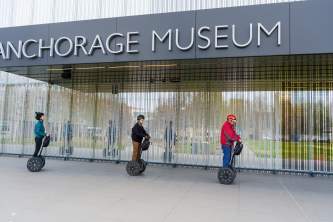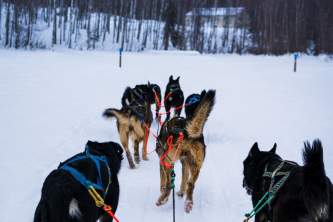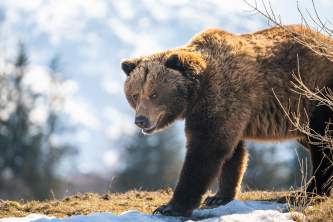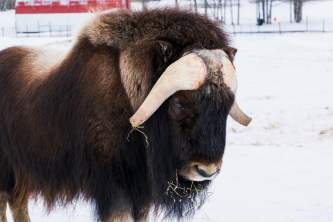Bear-Viewing Day Trip to Homestead Lodge

By Jeff Schultz
Professional Photographer and Photo Tour/Workshop Guide
“There’s a clam digger down on the left and we’re just about to pass over him,” said our bush pilot through the headset. He was referring to what appeared to be an 800-pound Alaskan brown bear casually digging in the mud and shallow water at low tide, and our group craned their necks in hopes of catching a glimpse. It was a very good sign to see a bear before we even landed.
After a 30-minute flight from Soldotna, a small town on the Kenai Peninsula, the plane set down on a sandy beach of Cook Inlet in Lake Clark National Park. It was part of a 3-day private photo tour I was leading, with three gentlemen from the lower 48. For this father, son, and brother-in-law of the father, the top priority was photographing Alaskan bears.
The First Encounter
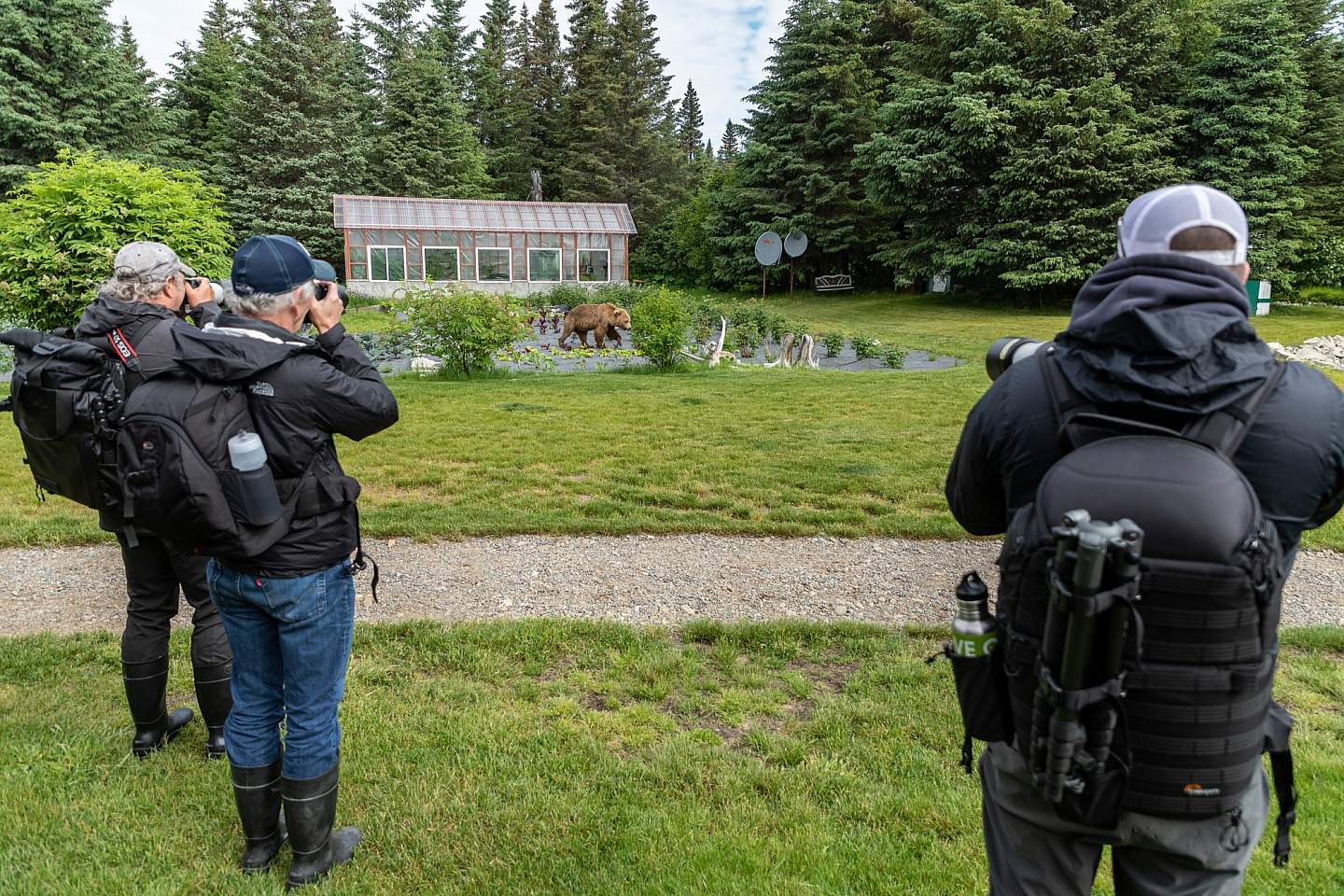
Bears regularly cut through the lodge grounds on their way to the beach.
Our bear guide for the day was awaiting our arrival and ready with an ATV and trailer to zip us to the lodge. After learning some necessary bear etiquette (“Always be ready, the bears can be anywhere”), we donned our lodge-issued rubber boots. We then got our cameras ready: As with all wildlife photography, it’s essential to have one’s cameras prepared at the proper exposure and at a moment’s notice.
We went to hop in the ATV trailer when I spotted it—an out-of-place movement that lasted for but a moment. “Wait, what’s that?” I said and pointed. A few seconds later, everyone saw it. A blonde bear was emerging from behind a storage shed. “Wow, that was fast!” said our guide. “They come through here a lot. He’s likely headed through the garden and toward the beach; he’ll typically walk next to the cookhouse. I suggest we walk a little further and catch him there.”
The feeling most everyone has when first photographing a bear is...shoot like a mad man. And that’s what happened. Motor drives whirred, eating up pixels with images of the bruin. There were no award-winning shots here, but they were still exciting close-ups of an Alaskan brown bear.
After the bear ambled on, we got in our ride to see who else might be about. With our guide driving the ATV and our group of 4 following in the aluminum trailer, we headed in the same direction as our recent subject. Sadly, it seemed he had disappeared. But our heads were scanning continuously in all directions—in the towering spruce forest to our left and among the grassy horizon with Cook Inlet beyond—looking for signs of movement.
Bears, Bears, and More Bears
No more than 50 yards further, in a low-lying ditch, our blonde friend surprised us as he popped his head up. The trailer abruptly halted, our guide shut off the engine, and the traveling threesome fired away—this time with a very nice, natural background of grasses and alert-looking poses from the bear. Winner shots!
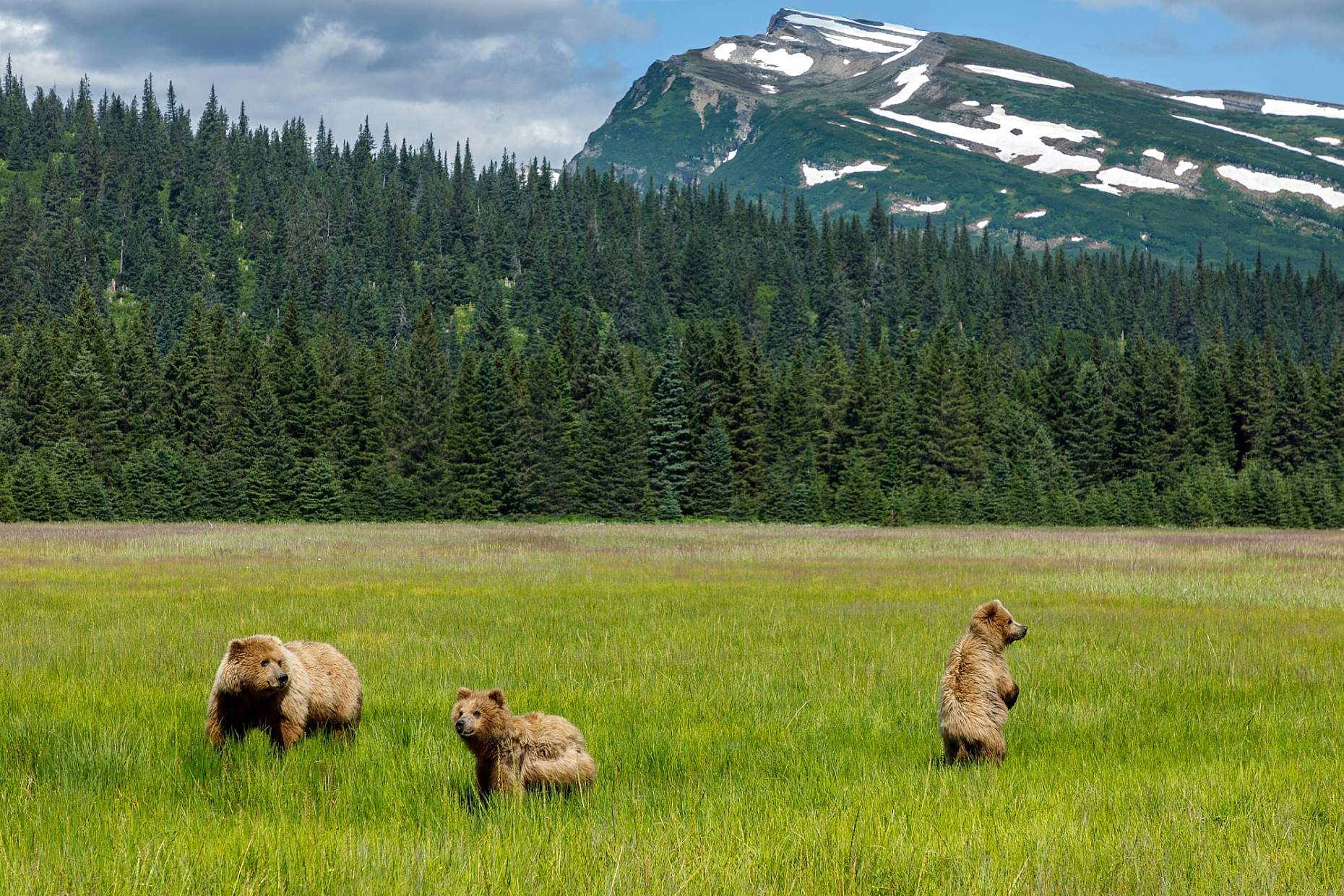
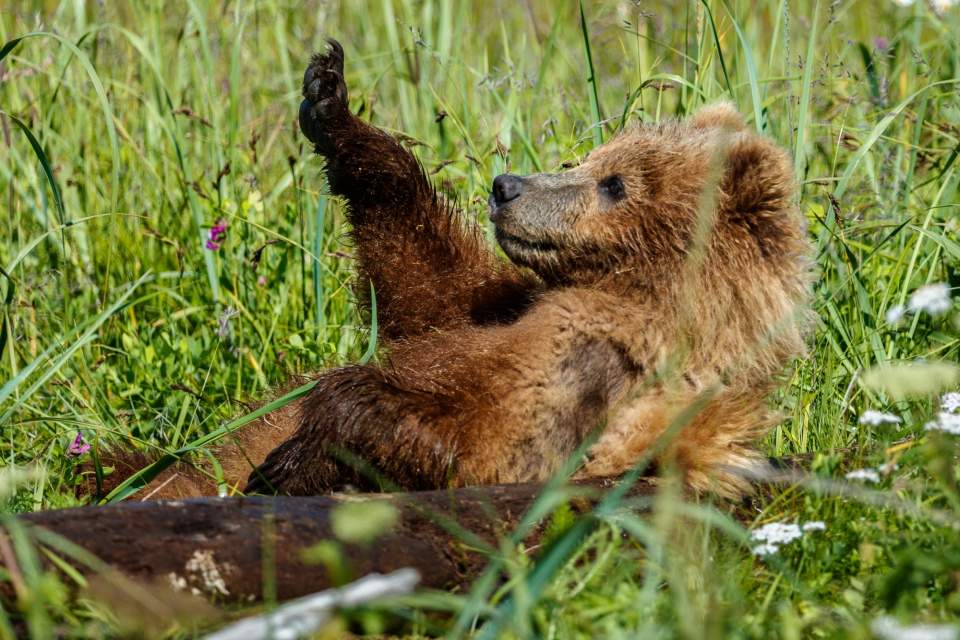
A spring cub playing with a downed log.
We scanned the area again as we bounced down the trail. With two main choices—the grassy fields between beach and forest or the shoreline of the inlet—we chose to stay in the meadows. We soon saw a sow with twin two-year-old cubs feeding on the sedge grass, and we walked several hundred yards for a closer view. With the trio of bears fully engaged in eating grass, we cautiously moved our location for a better angle to the sun and so the photos could include snow-capped mountains.
After a home-made salmon salad lunch on the deck of the lodge, our quest continued. It was amazing. Over the course of six hours in the Silver Salmon Creek area, we saw 12 different bears and were able to take close-up photos of nine of them. During one encounter, we had the distinct pleasure of watching a spring cub playing with and scratching on a downed log.
In the very late afternoon, our plane landed again at the beach and we made our way back to the Kenai Peninsula, ready to take more shots of Alaska’s magnificent landscape and wildlife.

